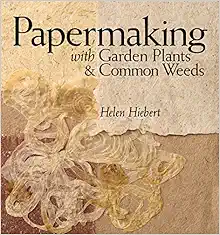
Papermaking with Garden Plants & Common Weeds
Description
From the Back Cover Beautiful Paper, Grown Right in Your Backyard Almost any common plant—from hosta to milkweed, cornhusks, and pineapple leaves—can be transformed into an elegant sheet of decorative paper. The possibilities for creating your own unique, eco-friendly papers with plant fibers are endless once you master the basic techniques. In Papermaking with Garden Plants & Common Weeds , expert papermaker Helen Hiebert shows you how to: Collect and harvest plant fibers from stalks, bark, leaves, and grasses Collect and harvest plant fibers from stalks, bark, leaves, and grasses Process the fiber and press, dry, and finish your paper Process the fiber and press, dry, and finish your paper Embellish your sheets with natural dyes and decorative materials such as flower petals and pine needles Embellish your sheets with natural dyes and decorative materials such as flower petals and pine needles Craft unique projects including vegetable papyrus, multi-paper collages, envelopes, lampshades, and specialty books Craft unique projects including vegetable papyrus, multi-paper collages, envelopes, lampshades, and specialty books Discover the excitement and joy of making one-of-a-kind papers directly from nature! About the Author Helen Hiebert is a papermaker, artist, and author of books on papermaking and paper crafts, including The Papermaker’s Companion and Papermaking with Garden Plants and Common Weeds . She teaches papermaking classes and workshops, writes a weekly blog, and is the Paper Talk podcast host. She lives near Vail, Colorado.
Features & Highlights
- Make exquisite papers right in your own kitchen. With a few pieces of basic equipment and a small harvest of backyard weeds, you can easily create stunningly original handcrafted papers. Helen Heibert’s illustrated step-by-step instructions show you how easy it is to blend and shape a variety of organic fibers into professional stationery, specialty books, and personalized gifts. You’ll soon be creatively integrating plant stalks, bark, flower petals, pine needles, and more to add unique colors and textures to your paper creations.





